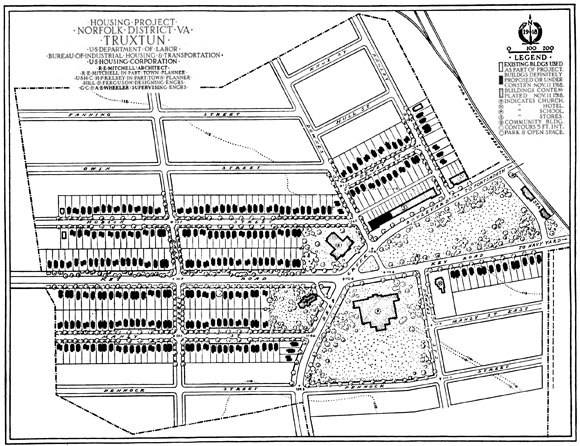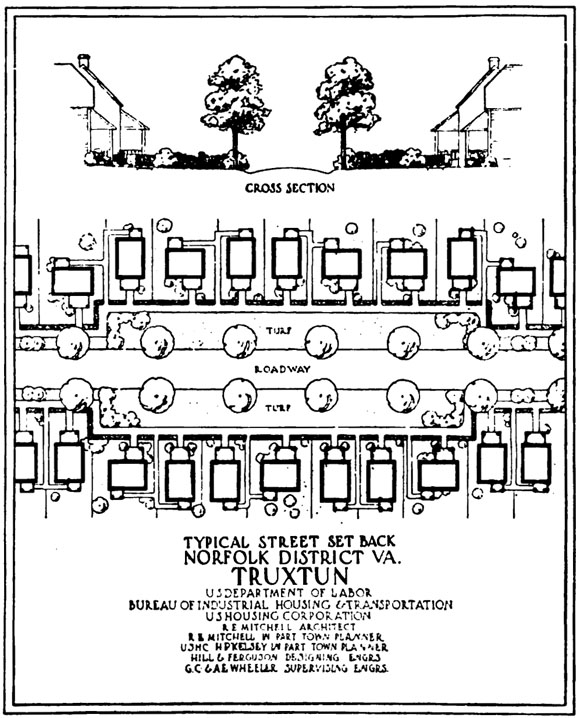Truxtun, VA
A community planned specifically for the black workers of the Portsmouth Navy Yard; one of three towns the USHC planned near
Portsmouth/Norfolk, VA.
Area planned: 43.22 acres. Housing planned: Detached houses, 203 families; semidetached houses, 50 families. Total, 253 families.
Housing constructed: Detached houses, 200 families; semidetached houses, 50 families. Total, 250 families.
"The site of Truxtun was a proper one for a negro development, since the land between it and the navy yard was already occupied by Negroes where built up all, and this class of occupancy would naturally in any case expand towards Truxtun and eventually include it. This, too was a desirable arrangement of population from the point of view of Portsmouth, as it did not force the colored people to traverse a white neighborhood on their way to work or to town, nor did it force much white pedestrian traffic through the colored neighborhood.
"…The land acquired for the development at Truxtun had been in part plotted in streets, and a few improvements constructed, but it was still practically a stretch of open field, with only three or four houses. The site slopes toward the south so gently as to appear to flat, but is high enough above the creek on the southeast for surface drainage; in fact it is possibly the highest of any land in the vicinity, being almost 16 feet above mean low water."

1919 excerpt describing the site:
“The intersection of Deep Creek Boulevard and Key Road is the natural center of the community, since these highways extend far into the outlying country, and they will be the main arteries of future development. Around this cross-roads the church, community house, and school were planned to be grouped. The small local stores were placed along Deep Creek Boulevard, as being sufficiently convenient of access while leaving the three most important sites for the most important and largest buildings. The Norfolk & Portsmouth Belt Line Railroad may in future serve the neighborhood”
“The minor streets run east and west parallel to Key Road, to offer the best exposure of the houses to the wind, a very important matter in the climate of Portsmouth, especially when the houses are close together along the street. On Hobson and Manly streets a slight extra set back of some of the houses and a special treatment of the planting strip make a variation from the straight row, and give some of the advantages of a neighborhood open space.”
The Truxtun Site Today
Street View Today
Street Concept, 1919
